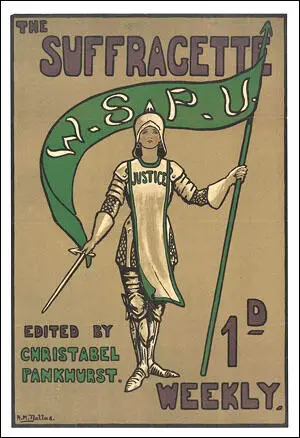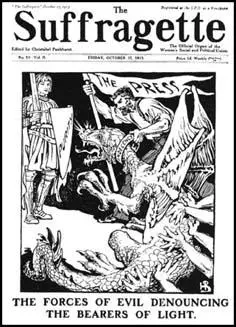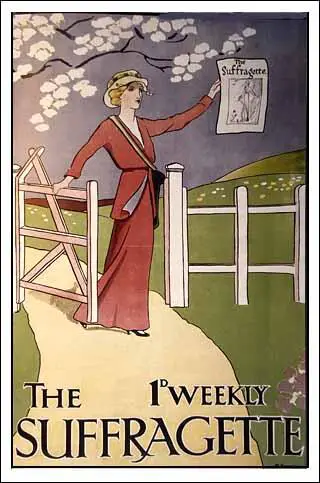The Suffragette
On 4th March, 1912, the WSPU organised another window-breaking demonstration. This time the target was government offices in Whitehall. Some members of the WSPU, including Frederick Pethick-Lawrence and Emmeline Pethick-Lawrence, both disagreed with this strategy but Christabel Pankhurst ignored their objections. As soon as this wholesale smashing of shop windows began, the government ordered the arrest of the leaders of the WSPU. Christabel escaped to France but Frederick and Emmeline were arrested, tried and sentenced to nine months imprisonment.
On their release from prison, the Pethick-Lawrences began to speak openly about the possibility that this window-smashing campaign would lose support for the WSPU. At a meeting in France, in October 1912, Christabel Pankhurst told Emmeline and Frederick about the proposed arson campaign. When Emmeline and Frederick objected, Christabel arranged for them to be expelled from the the organisation. Emmeline later recalled in her autobiography, My Part in a Changing World (1938): "My husband and I were not prepared to accept this decision as final. We felt that Christabel, who had lived for so many years with us in closest intimacy, could not be party to it. But when we met again to go further into the question… Christabel made it quite clear that she had no further use for us."

As a result of this expulsion, the WSPU lost control of Votes for Women. They now published their own newspaper, The Suffragette. Initially, the circulation of the newspaper was about 17,000. The Home Office tried to suppress the newspaper. On 2nd May 1913 Sidney Granville Drew, the managing director of Victoria House Printing Company which printed the newspaper, was arrested.
As Christabel Pankhurst had fled to France to avoid arrest and Annie Kenney, was put in charge of the WSPU in London. This involved the publication of the The Suffragette. Kenney arranged for it to be printed in Glasgow. However, attempts by the police to suppress the newspaper reducated circulation to 10,000 a week.

As Christabel Pankhurst had fled to France to avoid arrest and Annie Kenney, was put in charge of the WSPU in London. This involved the publication of the The Suffragette. Kenney arranged for it to be printed in Glasgow. However, attempts by the police to suppress the newspaper reducated circulation to 10,000 a week.
On 4th August, 1914, England declared war on Germany. The leadership of the WSPU began negotiating with the British government. On the 10th August the government announced it was releasing all suffragettes from prison. In return, the WSPU agreed to end their militant activities and help the war effort. (8)

In October 1915, the WSPU changed its newspaper's name from The Suffragette to Britannia. Emmeline's patriotic view of the war was reflected in the paper's new slogan: "For King, For Country, for Freedom'. In the newspaper anti-war activists such as Ramsay MacDonald were attacked as being "more German than the Germans". Another article on the Union of Democratic Control carried the headline: "Norman Angell: Is He Working for Germany?" Mary Macarthur and Margaret Bondfield were described as "Bolshevik women trade union leaders" and Arthur Henderson, who was in favour of a negotiated peace with Germany, was accused of being in the pay of the Central Powers.
The Britannia also attacked politicians and military leaders for not doing enough to win the war. In one article, Christabel Pankhurst accused Sir William Robertson, Chief of Imperial General Staff, of being "the tool and accomplice of the traitors, Grey, Asquith and Cecil".

